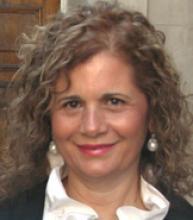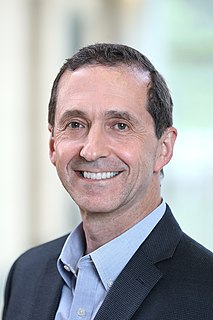Related Research Articles

A biosafety level (BSL), or pathogen/protection level, is a set of biocontainment precautions required to isolate dangerous biological agents in an enclosed laboratory facility. The levels of containment range from the lowest biosafety level 1 (BSL-1) to the highest at level 4 (BSL-4). In the United States, the Centers for Disease Control and Prevention (CDC) have specified these levels. In the European Union, the same biosafety levels are defined in a directive. In Canada the four levels are known as Containment Levels. Facilities with these designations are also sometimes given as P1 through P4, as in the term P3 laboratory.

Filoviridae is a family of single-stranded negative-sense RNA viruses in the order Mononegavirales. Two members of the family that are commonly known are Ebola virus and Marburg virus. Both viruses, and some of their lesser known relatives, cause severe disease in humans and nonhuman primates in the form of viral hemorrhagic fevers.

The genus Marburgvirus is the taxonomic home of Marburg marburgvirus, whose members are the two known marburgviruses, Marburg virus (MARV) and Ravn virus (RAVV). Both viruses cause Marburg virus disease in humans and nonhuman primates, a form of viral hemorrhagic fever. Both are Select agents, World Health Organization Risk Group 4 Pathogens, National Institutes of Health/National Institute of Allergy and Infectious Diseases Category A Priority Pathogens, Centers for Disease Control and Prevention Category A Bioterrorism Agents, and are listed as Biological Agents for Export Control by the Australia Group.
The National Institute of Allergy and Infectious Diseases is one of the 27 institutes and centers that make up the National Institutes of Health (NIH), an agency of the United States Department of Health and Human Services (HHS). NIAID's mission is to conduct basic and applied research to better understand, treat, and prevent infectious, immunologic, and allergic diseases.

The Hot Zone: A Terrifying True Story is a best-selling 1994 nonfiction thriller by Richard Preston about the origins and incidents involving viral hemorrhagic fevers, particularly ebolaviruses and marburgviruses. The basis of the book was Preston's 1992 New Yorker article "Crisis in the Hot Zone".

The Influenza Genome Sequencing Project (IGSP), initiated in early 2004, seeks to investigate influenza evolution by providing a public data set of complete influenza genome sequences from collections of isolates representing diverse species distributions.
Clarence James Peters, Jr is a physician, field virologist and former U.S. Army colonel. He is noted for his efforts in trying to stem epidemics of exotic infectious diseases such as the Ebola virus, Hanta virus and Rift Valley fever (RVF). He is an eminent authority on the virology, pathogenesis and epidemiology of hemorrhagic fever viruses.

Rocky Mountain Laboratories (RML) is part of the NIH Intramural Research Program and is located in Hamilton, Montana. Operated by the National Institute of Allergy and Infectious Diseases, RML conducts research on maximum containment pathogens such as Ebola as well as research on prions and intracellular pathogens such as Coxiella burnetti and Francisella tularensis. RML operates one of the few Biosafety level 4 laboratories in the United States, as well as Biosafety level 3 and ABSL3/4 laboratories.

The Vaccine Research Center (VRC), is an intramural division of the National Institute of Allergy and Infectious Diseases (NIAID), part of the National Institutes of Health (NIH), US Department of Health and Human Services (HHS). The mission of the VRC is to discover and develop both vaccines and antibody-based products that target infectious diseases.
The species Bundibugyo ebolavirus is the taxonomic home of one virus, Bundibugyo virus (BDBV), that forms filamentous virions and is closely related to the infamous Ebola virus (EBOV). The virus causes severe disease in humans in the form of viral hemorrhagic fever and is a Select agent, World Health Organization Risk Group 4 Pathogen, National Institutes of Health/National Institute of Allergy and Infectious Diseases Category A Priority Pathogen, Centers for Disease Control and Prevention Category A Bioterrorism Agent, and is listed as a Biological Agent for Export Control by the Australia Group.
Ravn virus is a close relative of Marburg virus (MARV). RAVV causes Marburg virus disease in humans and nonhuman primates, a form of viral hemorrhagic fever. RAVV is a Select agent, World Health Organization Risk Group 4 Pathogen, National Institutes of Health/National Institute of Allergy and Infectious Diseases Category A Priority Pathogen, Centers for Disease Control and Prevention Category A Bioterrorism Agent, and listed as a Biological Agent for Export Control by the Australia Group.

Stephen C. Harrison is professor of biological chemistry and molecular pharmacology, professor of pediatrics, and director of the Center for Molecular and Cellular Dynamics of Harvard Medical School, head of the Laboratory of Molecular Medicine at Boston Children's Hospital, and investigator of the Howard Hughes Medical Institute.
Bernard Moss is a virologist at the National Institute of Allergy and Infectious Diseases, part of the United States National Institutes of Health. He is the Chief of the NIAID Laboratory of Viral Diseases and of the NIAID Genetic Engineering Section. He is known for his work on poxviruses.
Karl M Johnson is an American virologist born 1929, known for discovering Machupo virus, Hantaan virus, and Ebola virus. He has held key positions in the American Society of Tropical Medicine and Hygiene.

Emily J. Erbelding is an American physician-scientist. She is the director of the Division of Microbiology and Infectious Diseases at the National Institute of Allergy and Infectious Diseases (NIAID). Erbelding was previously deputy director of the Division of AIDS at NIAID. She was a faculty member at Johns Hopkins School of Medicine and served as director of clinical services for the Baltimore City Health Department STD/HIV program.

Patrizia Farci is an Italian scientist and hepatologist. She is chief of the hepatic pathogenesis section at the National Institute of Allergy and Infectious Diseases. Farci conducts translational research in the field of liver diseases, particularly in the study of pathogenesis of acute and chronic viral hepatitis. She was previously a full professor of medicine and director of the liver unit and the postgraduate school of gastroenterology at the University of Cagliari.

Catharine "Katy" Mans Bosio is an American biologist. She is a senior investigator and chief of the immunity to pulmonary pathogens section at the National Institute of Allergy and Infectious Diseases.

Heinz (Heinrich) Ulrich Feldmann is a German-American virologist who currently serves as the chief of the laboratory of virology at Rocky Mountain Laboratories, NIAID and heads the Disease Modelling and Transmission section. His research focuses on highly pathogenic viruses that require strict biocontainment, including those that cause viral hemorrhagic fever such as Ebola and Lassa. He has been responsible for the development of timely viral countermeasures including the rVSV-ZEBOV vaccine (Ervebro), development of vaccines and drugs against SARS-CoV-2, and epidemiology of SARS-CoV.

John Ring La Montagne was a Mexican-American biomedical scientist who served as the deputy director of the National Institute of Allergy and Infectious Diseases from 1998 to 2004. He specialized in viral vaccines, HIV/AIDS research, and oversaw NIH's biodefense research after the September 11 attacks.

John R. Mascola is an American physician-scientist, immunologist and infectious disease specialist. He is the director of the Vaccine Research Center (VRC), part of the National Institute of Allergy and Infectious Diseases (NIAID), National Institutes of Health (NIH). He also serves as a principal advisor to Anthony Fauci, director of NIAID, on vaccines and biomedical research affairs.
References
- 1 2 "Peter Jahrling, Ph.D. | NIH: National Institute of Allergy and Infectious Diseases". Niaid.nih.gov. Retrieved 2017-03-30.
- ↑ "Peter B. Jahrling, Ph.D. | Principal Investigators | NIH Intramural Research Program". Irp.nih.gov. 2011-06-01. Retrieved 2017-03-30.
- ↑ "Integrated Research Facility at Fort Detrick - Peter Jahrling". Grantome.com. Retrieved 2017-03-30.
- ↑ Vivien Marx (January 2014). "High-security labs: Life in the danger zone". Nature. 505 (7483): 437–441. Bibcode:2014Natur.505..437M. doi:10.1038/505437a. PMC 7095018 . PMID 24429638.
- ↑ Cohn, Paulette (May 7, 2019). "Topher Grace on Going from The Hot Zone to the Fun Minor Adventures with Topher Grace". Parade . Retrieved May 28, 2019.
- ↑ "Fellows of AAAS" (PDF). Retrieved 8 May 2019.
- ↑ "Integrated Research Facility Leadership | NIH: National Institute of Allergy and Infectious Diseases". www.niaid.nih.gov. Retrieved 8 May 2019.